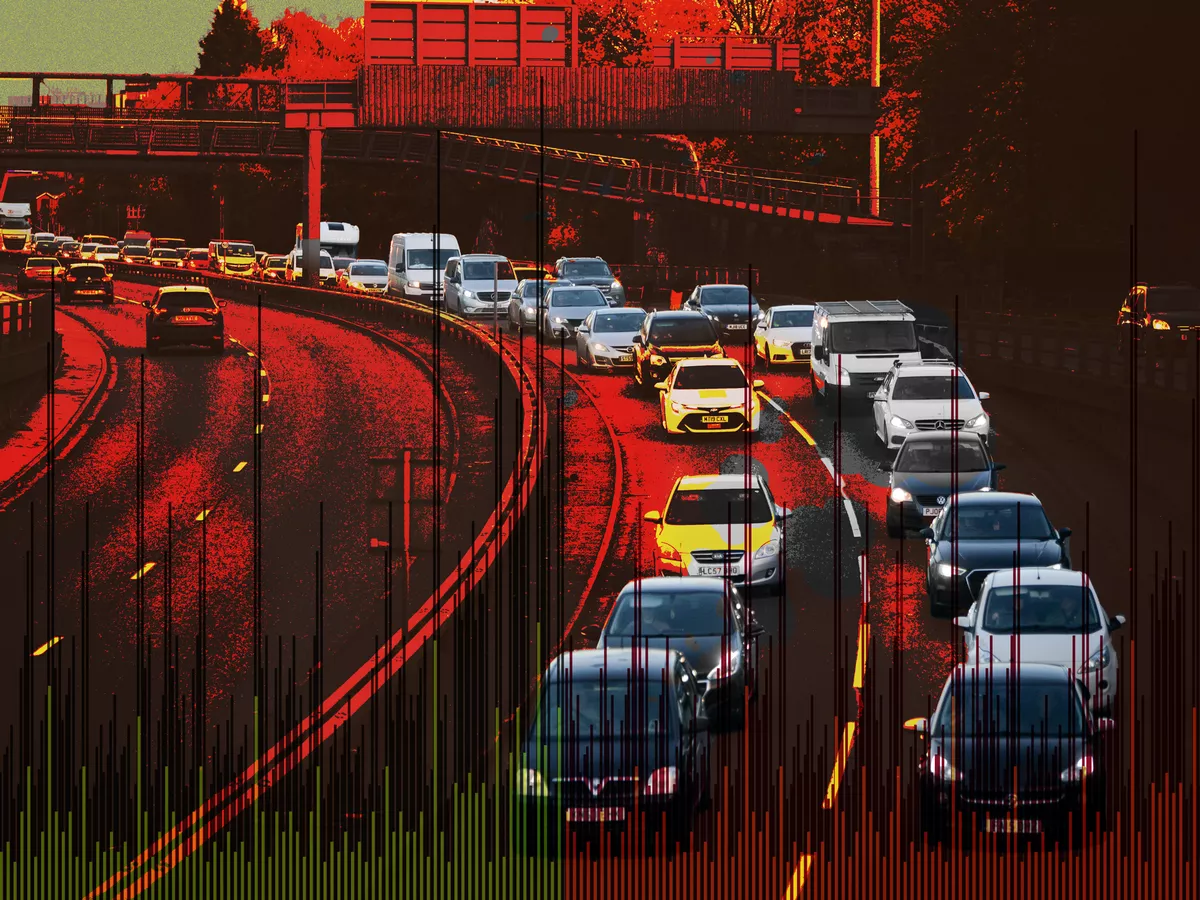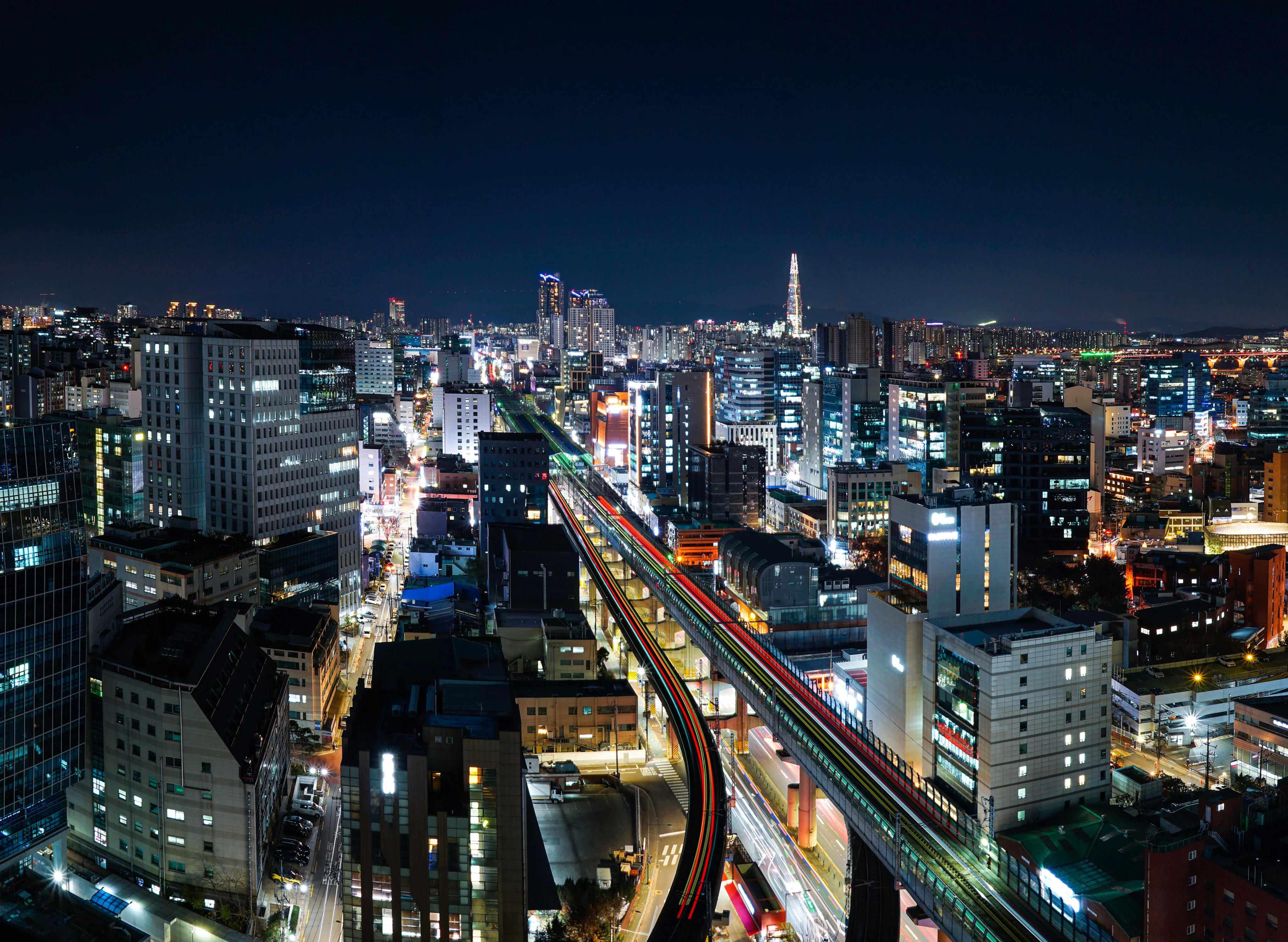Copyright manchestereveningnews

In 38 areas of Greater Manchester, you are at risk just by breathing. Despite major strides to improve air quality across the region, there are a number of areas where the air quality is still exceeding legal thresholds, with the air masked with dangerous fumes. It's mostly the fault of emissions from vehicles, worsened during peak times and congestion on the Greater Manchester's roads. How 'at risk' you are is a postcode lottery. It's in areas where people live. Where thousands of children walk to school and commuters travel to work. They are breathing in 'toxic air' without a second's thought. A recent study claimed pollution in Manchester remains so severe it’s ‘like smoking 149 cigarettes a year’. People with long-term exposure to the fumes could be at risk of serious health issues, with a leading campaign group now calling it a 'public health emergency'. The city region, and parts of Stockport , Wigan , Tameside and Oldham , all recorded levels of nitrogen dioxide that for years have consistently reached levels above the legal limit, according to the latest official data examined by the Manchester Evening News. Exposure to the gas, formed primarily from the burning of fossil fuels by vehicles, power plants, and industries, has a cumulative impact over time and may contribute to chronic health conditions. It can can cause respiratory issues like airway inflammation, reduced lung function, and an increased risk of respiratory infections. Recent figures obtained by the campaign group Mums for Lungs, under the Freedom of Information Act, show that in the last two years nearly 8,500 children were admitted to the specialist paediatric respiratory services at Manchester University Foundation NHS Trust, or seen as outpatients. The group claims the number of children, toddlers and babies admitted to Manchester hospitals with breathing problems has soared by hundreds in just one year , warning a failure to get air pollution under legal levels is contributing to an epidemic of serious lung problems and respiratory illnesses. Campaigners also claim that measurement readings of air quality in Manchester don't give the full picture - with the majority of diffusion tubes focussed on the city region rather than further afield. An average reading, showing illegal limits of NO2, also takes into account peak times on the roads, such as early morning and rush hour, when readings will be significantly higher. As well as applauding the efforts to tackle air pollution across Greater Manchester - which has seen huge improvement in the last five years due to the likes of economical and electrified buses with improved frequencies and timetables - Liz Godfrey, who runs the Manchester Mums for Lungs group, says the issue remains a 'public health emergency', and that areas only just falling just beneath the legal maximum threshold is 'nothing to be proud of'. "Once again it has been confirmed that Greater Manchester’s children are still breathing some of the most polluted air in the UK, with illegal levels of pollution persisting for over 15 years," she said. "This ongoing exposure is contributing to serious health impacts, including stunted lung development in children and rising rates of asthma and cancer among non-smokers. "We support the efforts to enhance and incentivise public transport, yet despite it, we're still seeing a continued rise in car ownership in Manchester. It's crucial we encourage people to avoid using their cars for short trips, particularly when it comes to diesel vehicles, which are among the most harmful to health. "If you live outside the city centre, there's really no way of knowing the air quality where you are, unless you're near a major road with a monitoring station. That's the problem with the current data—it only reflects an average. During peak times, when children are walking to school and traffic is heavier, air pollution levels are much higher. "We need a clear plan for addressing this issue because this is a public health emergency and it demands immediate attention." The levels of nitrogen oxide in the air are measured against the long-term annual mean legal limit. The legal limit in the UK is 40 micrograms per cubic metre of air. Measurements of less than 40.4μg/m3 are rounded down, making the clean air plan compliant. But the World Health Organisation’s recommended limit is just 10. Exposure to the harmful gas has a cumulative impact over time and may contribute to chronic health conditions – similar to smoking. The latest data available is for 2024, as published by Clean Air Greater Manchester. Some areas, such as the Mancunian Way and A6 / Stockport Road, have various readings due to multiple measuring diffusion tubes along the same route. The 38 areas of Greater Manchester where pollution levels are above legal limits, where Nitrogen Dioxide is measured in μg/m3: See our interactive map below: In Greater Manchester, the investment-led GM Clean Air Plan carried out recordings at 270 locations, an increase from 248 in 2023. There were 38 sites of exceedance, which was down from 64 in 2023. The year before, there were 95 areas with illegal air quality, and 129 in 2019. One bold plan announced in Greater Manchester was the Clean Air Zone (CAZ). The ambition was to charge motorists in certain more polluting vehicles in order to use the region's roads. It was hoped it would deter some motorists from using their vehicles where not necessary, and improve air quality and public health. When it was scrapped due to public backlash, despite more than £100m in taxpayer funding, it was replaced by TfGM's clean air plan. Unveiled by Andy Burnham in late 2023, it was an alternative to charging motorists, with an instruction to solve the pollution problem ‘in the shortest possible time, and by 2026 at the latest’. The £86m ‘investment-led, non-charging approach’ is instead billed to reduce emissions by spending £51m on switching Bee Network buses to cleaner, electric models, and offering £8m of grants and loans to taxi drivers to upgrade their cabs. Bus depots are being modernised to support electric vehicles for the Bee Network. Depots in Bolton , Manchester and Oldham have already been upgraded with charging infrastructure, with Ashton recently becoming the city region’s first fully electric depot. Another £5m will be spent on improving traffic flow in-and-around the city centre, where emissions are at their worst. Mayor Andy Burnham previously defended the scrapping of the Clean Air Zone charges, insisting it ‘would have not made the difference’ to the pollution that campaign groups like Mums for Lungs are sharing fury about. The Mayor said that a charging CAZ, which would have seen some motorists charged up to £60 a day , ‘would have trapped people paying a charge but unable to afford to change their vehicle’. He previously told the BBC : "[Mums for Lungs] are right to raise the health impact on kids of poor air quality. We can't turn away from the issue. “Five years ago, we had 129 locations where there was too much nitrogen dioxide in the air, above the legal limit. It’s fallen by half, there are 64 now and it's coming down all the time as we bring in more and more electric buses to the Bee Network. "That’s the biggest change that’s driving this reduction. There's no complacency here. "For those that say we should have had a charging Clean Air Zone, the conclusion we reached was it would have not made the difference because it would have trapped people paying a charge but unable to afford to change their vehicle. “It would not have achieved the clean air goal in the way that we all want to see.” However, the controversial expansion of the ULEZ in London has dramatically reduced levels of Nitrogen Dioxide. A report earlier this year found it had estimated to have dropped by 27 per cent. Liz, from Mums for Lungs added: "While London once had the worst air quality in the country, strong leadership, decisive policies, and political will have led to significant improvements—showing that real change is possible when action is taken. "Fundamentally, this is about protecting children's health. In so many areas, they're still breathing in harmful, toxic air. "Exposure to air pollution is the second leading risk factor for deaths among children under five. It’s happening around us every day, and it pains me that kids across Greater Manchester are growing up in a city so heavily polluted." In a statement to the Manchester Evening News , a spokesperson for Manchester City Council said: “The issue of clean air is one that the Council takes very seriously. "For several years the Council has made it clear that more action both locally and nationally needs to be taken if we are all collectively to address air pollution and the knock on impacts it has on our communities. “This also translates into changing the ways by which we move around the city and help encourage people towards choosing more environmentally friendly ways of travel. “There is an investment-led GM Clean Air Plan in place which will help make significant improvements in air quality throughout the region through electrification of buses, taxis and targeted traffic measures. “The Council’s monitoring has shown that air quality has improved significantly across the city, and most locations in Manchester were within legal limits last year, but we acknowledge that improvements are still needed in specific areas that may be subject to higher levels of airborne pollutants. “As mentioned above, more is being done at a regional level to improve emissions where they are connected to areas of high traffic flows or specific vehicle types. “While we are unable to comment on the specific health conditions of individual residents, we acknowledge air quality does have an impact on a person’s health, alongside other social and environmental factors outside the Council’s control.” The Bee Network previously announced the introduction of more low and zero-emission buses, with £2.5 billion in wider government transport funding aiming to help Greater Manchester fully electrify its bus fleet by 2030. A Clean Air Greater Manchester spokesperson added: "Poor air quality impacts people’s health and we are tackling this issue head on across Greater Manchester. “Because of the major investments in cleaner, greener public transport through the Bee Network and our Clean Air Plan, we are cleaning up the air that residents breathe, with a continued reduction in areas where air quality is above legal limits. “We know there is still a lot more to do and our unrelenting focus remains making the city-region a cleaner and healthier place to live.”



